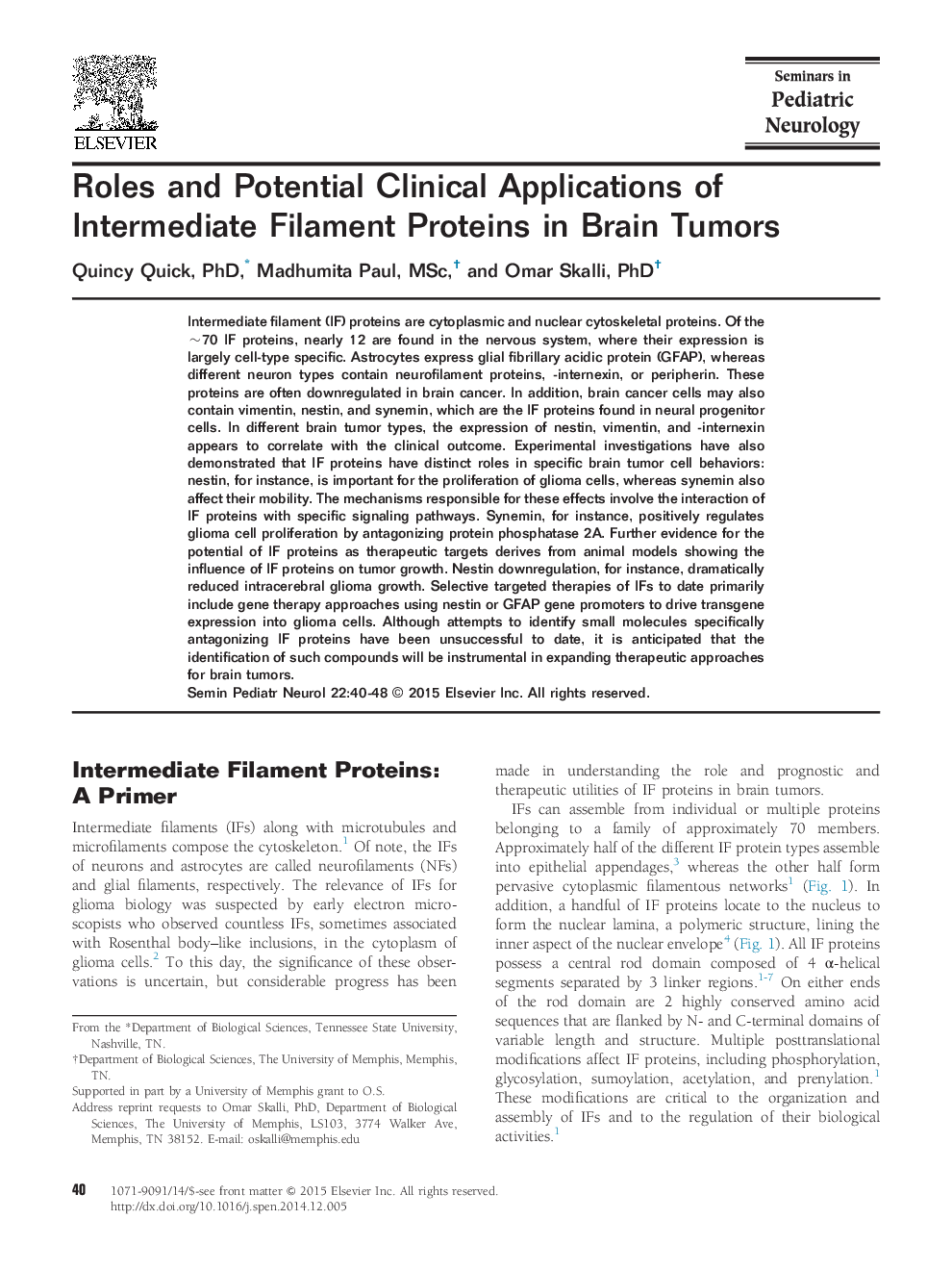| Article ID | Journal | Published Year | Pages | File Type |
|---|---|---|---|---|
| 3090869 | Seminars in Pediatric Neurology | 2015 | 9 Pages |
Abstract
Intermediate filament (IF) proteins are cytoplasmic and nuclear cytoskeletal proteins. Of the ~70 IF proteins, nearly 12 are found in the nervous system, where their expression is largely cell-type specific. Astrocytes express glial fibrillary acidic protein (GFAP), whereas different neuron types contain neurofilament proteins, α-internexin, or peripherin. These proteins are often downregulated in brain cancer. In addition, brain cancer cells may also contain vimentin, nestin, and synemin, which are the IF proteins found in neural progenitor cells. In different brain tumor types, the expression of nestin, vimentin, and α-internexin appears to correlate with the clinical outcome. Experimental investigations have also demonstrated that IF proteins have distinct roles in specific brain tumor cell behaviors: nestin, for instance, is important for the proliferation of glioma cells, whereas synemin also affect their mobility. The mechanisms responsible for these effects involve the interaction of IF proteins with specific signaling pathways. Synemin, for instance, positively regulates glioma cell proliferation by antagonizing protein phosphatase 2A. Further evidence for the potential of IF proteins as therapeutic targets derives from animal models showing the influence of IF proteins on tumor growth. Nestin downregulation, for instance, dramatically reduced intracerebral glioma growth. Selective targeted therapies of IFs to date primarily include gene therapy approaches using nestin or GFAP gene promoters to drive transgene expression into glioma cells. Although attempts to identify small molecules specifically antagonizing IF proteins have been unsuccessful to date, it is anticipated that the identification of such compounds will be instrumental in expanding therapeutic approaches for brain tumors.
Related Topics
Life Sciences
Neuroscience
Developmental Neuroscience
Authors
Quincy PhD, Madhumita MSc, Omar PhD,
